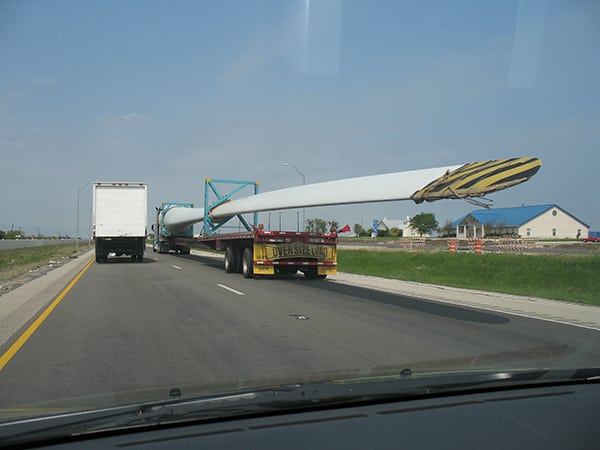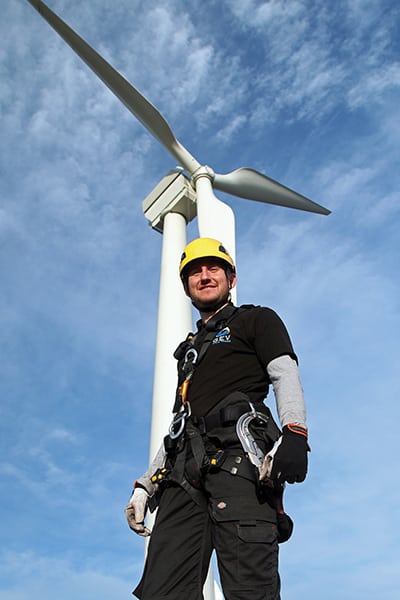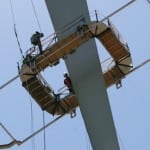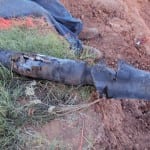Blades are probably the most delicate part of a wind turbine and the most susceptible to accidental damage. Some estimates suggest that greater than 90% of wind turbine blades are damaged to some degree while in transit from the manufacturer to the wind farm or while being installed. The damage could be wide and varied, from picking up stone chips during delivery (Figure 6) to unintentional harm to the vortex.
 |
|
6. Vulnerable at ground level. There are countless opportunities for damage when wind turbine blades are being transported. Courtesy: Creative Commons/Alexi Kostibas |
Blades Deserve Proper Quality Control
Damage to any element of a turbine when moving from factory to site affects the owner in delays and added costs. That is why blades should receive a high degree of attention to ensure they reach the installation site in perfect condition.
GEV Wind Power—a European wind turbine maintenance company—has developed an innovative factory-to-site quality assurance (QA) program that could offer clients peace of mind during the transit of wind turbine blades and generators. The new scheme assists in maintaining the industry’s exacting installation schedules, which are often hindered due to unexpected repairs being necessary.
“The process involves carrying out QA inspections on newly fabricated blades, which once inspected and signed off, are transferred to site. On arrival, our technicians will inspect for transportation damage, which if evident, can be repaired instantly onsite. The blades will then be certified and given the quality assurance all clear,” said Steve Ross, managing director of GEV Wind Power.
Quality Assurance Doesn’t Stop Upon Delivery
After construction, all wind turbine generators are also inspected as part of the QA mapping process using the company’s panoblade camera system (for more on photo scanning, see “Innovative Wind Turbine Blade Inspection and Maintenance Tools” in the May 2015 issue of POWER). This step catches any damage incurred during the installation process because the ultimate goal is for blades to be perfect when the turbine enters service.
“Our QA program is a very exciting innovation for the industry and ensures that at every stage of the process from blade manufacture to installation and commissioning, rigorous quality checks are undertaken and opportunities to rectify damage are factored in,” Ross said. “This new service also provides clients with accurate and detailed information should they need to seek recourse for damage or repairs.”
The key to success is that GEV Wind Power can be counted on as a trusted and impartial partner, Ross said. He noted that all of the company’s technicians working in the QA program have extensive knowledge and skill—many have first-hand experience working in blade factories—so he said their qualifications are perfect for their roles as inspectors (Figure 7). Additionally, when problems are identified on the ground prior to installation, the repairs are easier, safer, more cost-effective, and less disruptive to the operation. ■
 |
|
7. Standing tall. Daniel Rowcroft, pictured here, is a GEV Wind Power technician with vast experience inspecting wind turbine blades. Courtesy: GEV Wind Power |
—Aaron Larson is a POWER associate editor.










